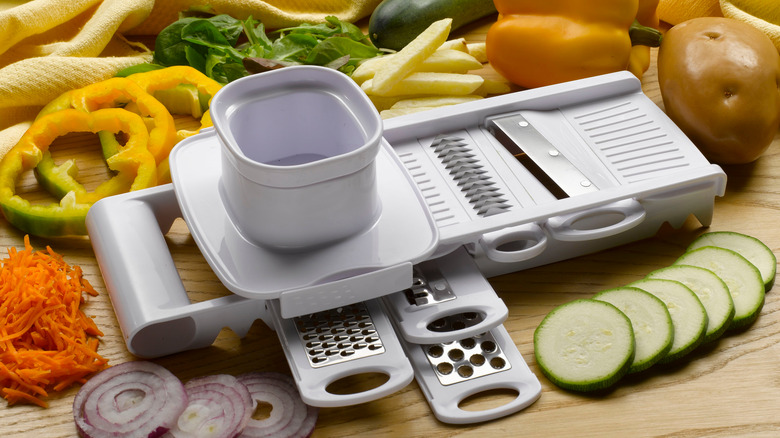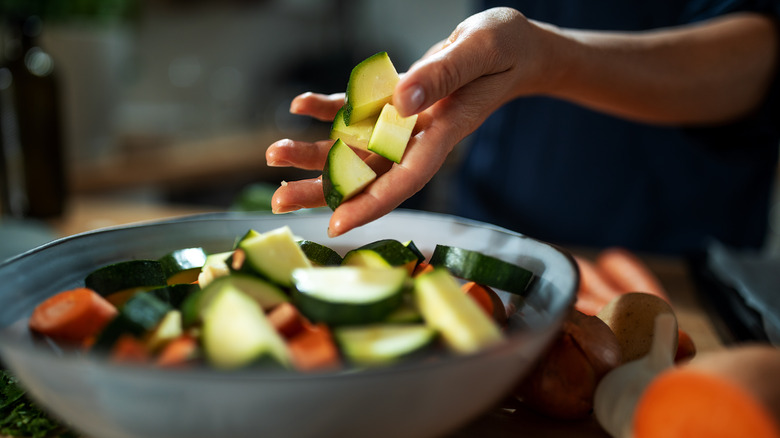The Absolute Best Way To Clean Your Vegetable Chopper
While it's worth taking the time to chop vegetables properly, there's no denying that vegetable choppers are a godsend. Who wouldn't want to save all the tears from chopping an onion, or the sweat from cutting uniform cucumber cubes for a perfect chicken mango salad? Except, once the job is done, these convenience gadgets can be a huge pain to clean. They often have too many nooks and crannies where bits and pieces of vegetables get stuck, and their blades are incredibly sharp and intimidating! Sponges can't reach between the blades, and the bristles of a brush often get stuck in the corners as well.
Here's an easy way to clean your vegetable chopper without risking a finger. All you need is a plastic container large enough to accommodate your chopper, that has a tight, secure lid. First, fill the container with tap water, making sure there's enough to completely submerge the chopper, but be careful to not overfill it. Add a few drops of dish soap to make a mild solution. Next, place the chopper inside and close the lid, engaging all the locks — this is very important because you don't want your blade flying out with all the soapy water! Then, give the container a shake for about 20 seconds. Take the blade out to see that the vegetable debris has been cleared. Rinse it under the tap, dry it with a towel, and your vegetable chopper should be good to go again!
Extra chopper care tips for a sharp slice
No matter how busy you are, always clean your vegetable chopper as soon as you can, even if it looks spotless after use. Leave it out for too long and the food residue will dry out and harden up, making it a hassle to clean later. Plus, the acid from the food can cause the blade to rust. That's why we recommend hand washing immediately after use and not waiting for the dishwasher, even if your vegetable chopper is dishwasher safe (which not all of them are). After cleaning and rinsing your blades, use a towel to blot off the water. A wet blade can develop mold and rust, especially in a container where moisture can't escape.
While it's nearly impossible to sharpen the blades on your vegetable chopper, you can keep them sharp by only using them for appropriate foods. Never use your chopper to cut frozen food, bones, seeds, or pits. Also, don't overload it with too much food at once — the pressure can break the plastic joints. If you have a lot of food to cut, consider using a food processor instead. For particularly tough vegetables, brushing a food-safe lubricant, such as cooking oil, on the blade might be a good idea to help it cut more smoothly.

